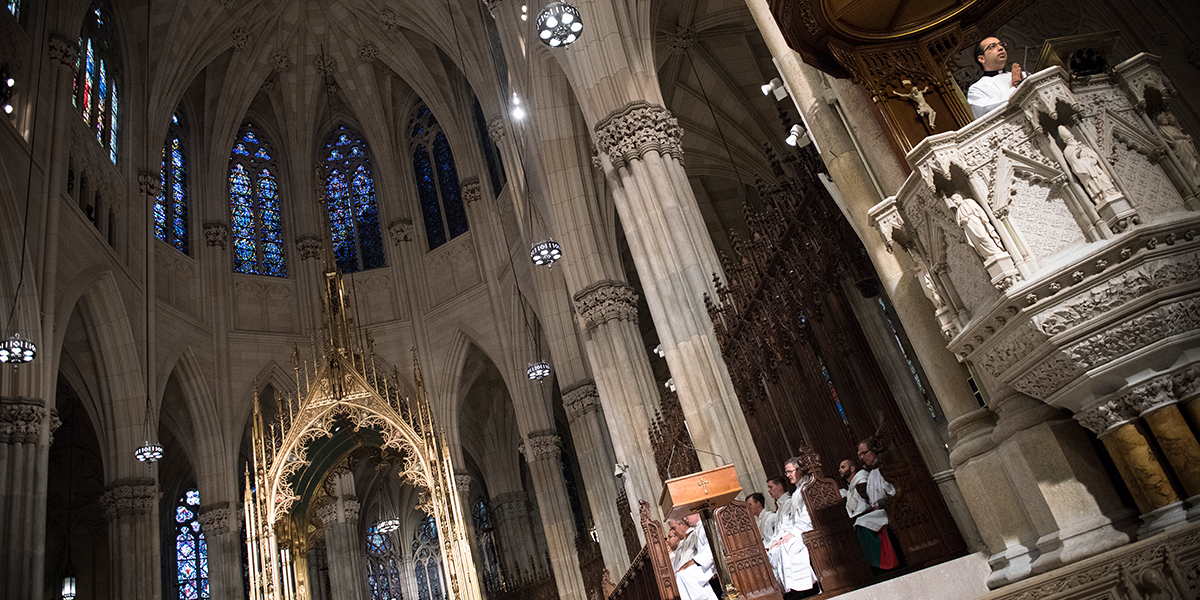In Church lingo, people often talk about ambos and pulpits interchangeably. Historically, however, these two terms were used to identify different things, and each had its own specific purpose in the liturgy.
Ambo

The word “ambo” comes from a Greek word meaning “step” or “elevation.” Since the 4th century Christians were accustomed to using a raised platform during Mass to chant or read the Epistle (typically a reading from St. Paul’s letters) and Gospel. Some historians believe it is connected to the platform used by Jewish rabbis to read the scriptures before the people. Spiritually it is derived from the action of Jesus when he “went up on the mountain, and … opened his mouth and taught them” (Matthew 5:1,2).

Read more:
Ambos and altars
As the liturgy developed two ambos were put in place to distinguish between the Epistle and the Gospel. The Epistle ambo was placed on the southern side of the sanctuary, while the Gospel ambo was located on the northern side. Ambos were designed in various ways, always with a place for the book to be read with several steps leading up to it. By the 14th century the use of ambos was in a steady decline.
Pulpit

Immediately succeeding the ambo in liturgical function was the pulpit. The word stems from the Latin pulpitum, and was originally used to denote a theatrical stage. In medieval churches it became a platform primarily used for preaching. The pulpit was located in the center of the nave (the place where the people stood) and was highly elevated to allow the priest to adequately address his congregation.
After the Protestant Reformation pulpits became a central feature of Protestant churches, while in Catholic churches the use of pulpits steadily declined.
In the Catholic Church both ambo and pulpit were no longer in general use by the 19th century, especially in newly constructed churches. Instead there would often be a moveable lectern that was brought out for sermons and taken away for the remainder of Mass.
The General Instruction of the Roman Missal has the following instructions regarding the use of ambos in churches today:
It is appropriate that generally this place be a stationary ambo and not simply a movable lectern. The ambo must be located in keeping with the design of each church in such a way that the ordained ministers and readers may be clearly seen and heard by the faithful.
From the ambo only the readings, the Responsorial Psalm, and the Easter Proclamation (Exsultet) are to be proclaimed; likewise it may be used for giving the Homily and for announcing the intentions of the Universal Prayer. The dignity of the ambo requires that only a minister of the word should stand at it.

Read more:
This is why church pews were invented

